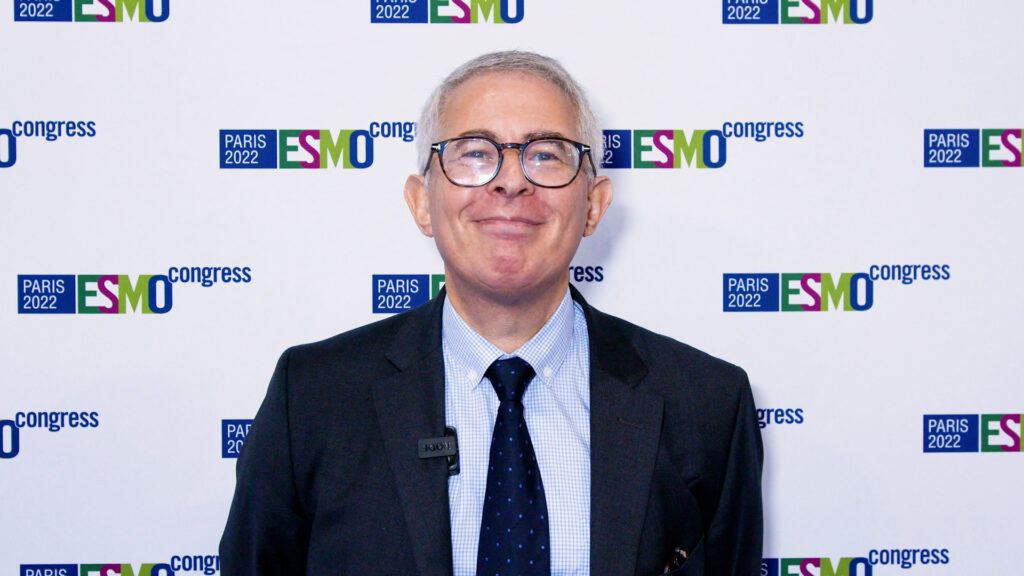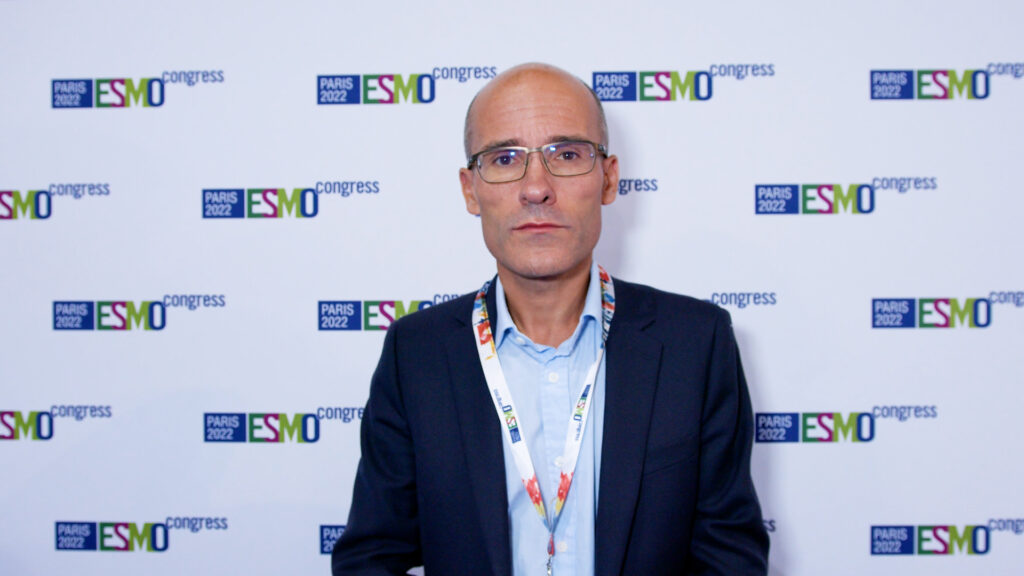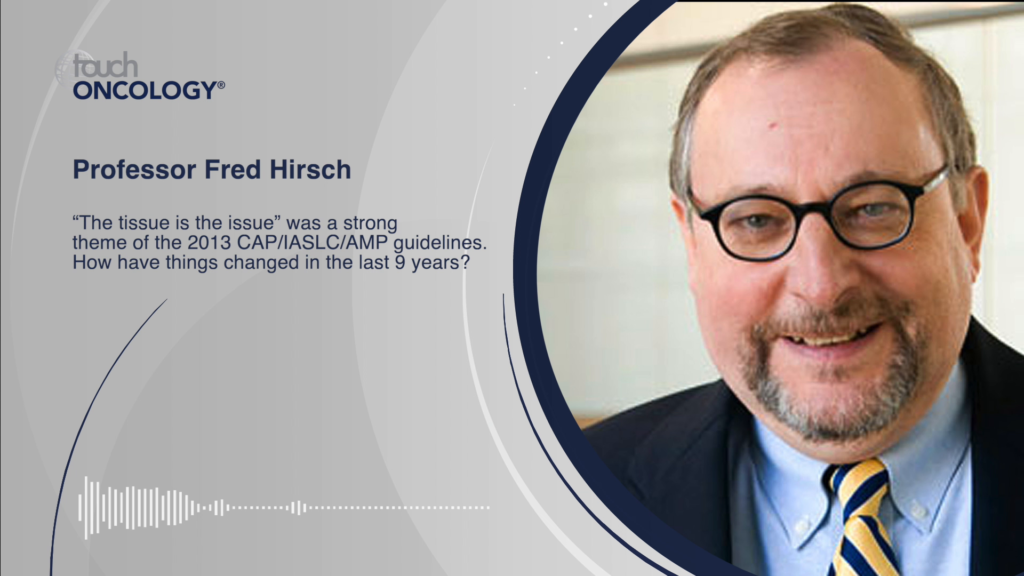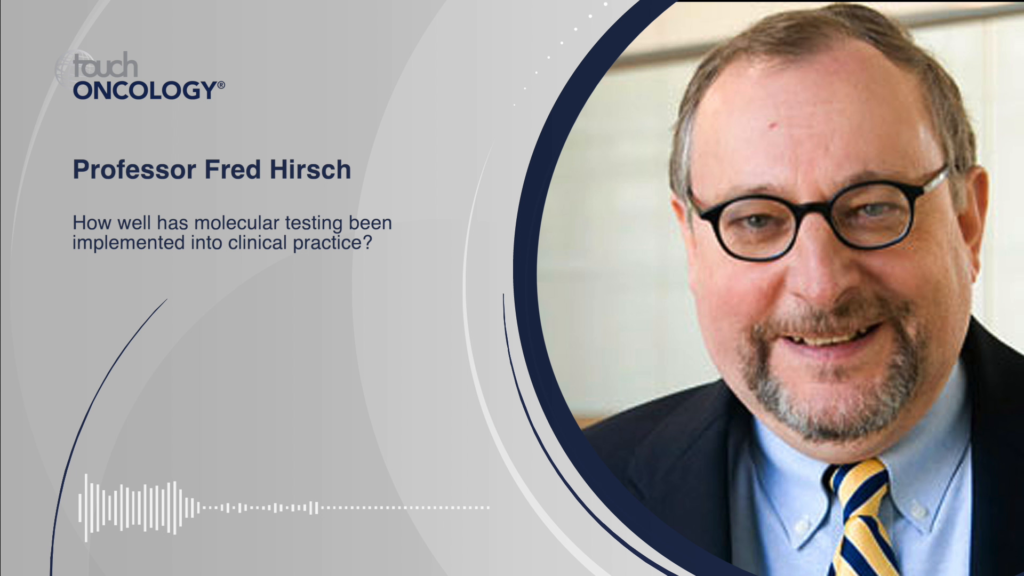The treatment landscape of many cancers has been transformed by the emergence of immune checkpoint inhibitors targeting programmed cell death protein 1 (PD-1) and its ligand (PD-L1). These agents are capable of eliciting durable responses and are particularly important in the treatment of non–small cell lung cancer (NSCLC), which is associated with a poor prognosis. However, recent data suggests that PD-1/PD-L1 blockade can lead to hyperprogressive disease, resulting in a promotion of tumour growth.1–3
Although accelerated progression has been reported for some time, many experts did not believe that it was genuinely related to immune checkpoint inhibition. In several Phase III studies, Kaplan-Meier survival curves have shown that immunotherapy initially appears to be worse than chemotherapy in terms of efficacy, then the curves cross and immunotherapy proves superior.4,5 Some observed accelerations in tumour growth following immune checkpoint blockade are temporary, known as pseudoprogression, which has been reported in 0.6–5.8% of cases and caused by initial radiographic progression from immune cell infiltration around the tumour.6 By contrast, hyperprogression, which has been reported in 9–29% of tumour growth accelerations after immune checkpoint blockade, involves a drastic and irreversible progression of disease, reducing patient quality of life and eventually becoming life-threatening.1–3 Hyperprogression is often defined as ≥2-fold increase in the tumour growth ratio or tumour growth kinetics ratio during treatment with immune checkpoint inhibitors compared with that observed prior to treatment.3
At the 2019 World Conference on Lung Cancer (WCLC), which was held on 7–10 September, 2019 in Barcelona, Spain, and hosted by the International Association for the Study of Lung Cancer (IASLC), this evidence was supported by new findings from a retrospective study involving 257 patients with advanced NSCLC who were treated between April 2013 and December 2019 at the Fondazione IRCCS Istituto Nazionale dei Tumori di Milano in Italy. Patients had received at least one cycle of immune checkpoint inhibitors and were stratified by four categories: responders (57 cases, 22.2%), best response stable disease (69 cases, 26.8%), best response progressive disease (78 cases, 30.4%), or hyperprogressive disease (53 cases, 20.6%),7 defined as in a previous study.2 At a median follow-up of 23.5 months, the median progression-free survival was 14.2, 6.5, 2.3, and 1.5 months (p<0.0001) and median overall survival was 32.5, 17.8, 7.8, and 4.1 months (p<0.00001) in the responders, stable disease, progressive disease, and hyperprogressive disease groups, respectively. After adjusting for variables between the patients in the progressive disease and hyperprogressive disease groups, patients in the hyperprogressive disease group were found to have worse clinical outcomes than those in the progressive disease group, suggesting that regular progression was different to hyperprogression.7
Hyperprogression is clearly an unusual response to immune checkpoint inhibitor therapy, and it is therefore important to identify the minority of patients who are likely to experience it. Studies to date indicate that hyperprogression is not associated with higher tumour burden at baseline, the number of previous lines of treatment, or the expression of PD-L1 in tumours.3 Three clinical factors – older age,3 the presence of more than two metastatic sites prior to the administration of PD-1/PD-L1 inhibitors,1 and regional recurrence in an irradiated field in cases of head and neck squamous cell carcinoma8 – have been associated with hyperprogression. However, these findings have not been consistently reported across studies. In terms of genetic alterations, MDM2/MDM4 amplification, and EGFR mutations have been associated with hyperprogression.8,9
More research is needed to fully characterise this phenomenon as studies to date have been relatively small. Since PD-1 and PD-L1 inhibitors are now approved in many countries around the world, a global retrospective study is warranted. There is also a need for a standardised definition of hyperprogression, as this varies across studies. It is possible that the use of chemotherapy in combination with PD-1/PD-L1 inhibitors may minimise the incidence of hyperprogression. In KEYNOTE-189, which compared the treatment of combined pembrolizumab/immunotherapy versus patients treated with pembrolizumab alone, both in the first-line setting, the crossing of the Kaplan-Meier curves was not seen.10
Most urgently, it is important to promptly identify hyperprogression. Biopsies taken from patients with pseudoprogression have shown infiltration of inflammatory cells,11 which may be useful in distinguishing pseudoprogression from hyperprogression. Currently, there are no standard second-line systemic treatment options for patients who undergo progression on PD-1/PD-L1 inhibitors. National Comprehensive Cancer Network (NCCN) guidelines suggest treatment with chemotherapy alone or in combination with antiangiogenic agents as well as considering entry into clinical trials.12 However, there have been no studies determining the optimum treatment for this scenario.
In conclusion, PD-1/PD-L1 inhibitors represent a major therapeutic advancement, but they are not effective in every patient and may be harmful in some. To optimise the use of these powerful agents, we need to identify those who will benefit most from them, without the risk of hyperprogression.
Support: No funding was received in the publication of this article.
Published Online: 12 October 2019
References
- Ferrara R, Mezquita L, Texier M, et al. Hyperprogressive disease in patients with advanced non-small cell lung cancer treated with PD-1/PD-L1 inhibitors or with single-agent chemotherapy. JAMA Oncol. 2018;4:1543–52.
- Lo Russo G, Moro M, Sommariva M, et al. Antibody-Fc/FcR interaction on macrophages as a mechanism for hyperprogressive disease in non-small cell lung cancer subsequent to PD-1/PD-L1 blockade. Clin Cancer Res. 2019;25:989–99.
- Champiat S, Dercle L, Ammari S, et al. Hyperprogressive disease is a new pattern of progression in cancer patients treated by anti-PD-1/PD-L1. Clin Cancer Res. 2017;23:1920–8.
- Borghaei H, Paz-Ares L, Horn L, et al. Nivolumab versus docetaxel in advanced nonsquamous non-small-cell lung cancer. N Engl J Med. 2015;373:1627–39.
- Mok TSK, Wu YL, Kudaba I, et al. Pembrolizumab versus chemotherapy for previously untreated, PD-L1-expressing, locally advanced or metastatic non-small-cell lung cancer (KEYNOTE-042): a randomised, open-label, controlled, phase 3 trial. Lancet. 2019;393:1819–30.
- Wang Q, Gao J, Wu X. Pseudoprogression and hyperprogression after checkpoint blockade. Int Immunopharmacol. 2018;58:125–35.
- Lo Russo G, Signorelli D, Proto C, et al. Abstract OA1406; Hyperprogressive disease in advanced non–small cell lung cancer patients treated with immune checkpoint inhibitors. Presented at: IASLC 2019 World Conference on Lung Cancer hosted by the International Association for the Study of Lung Cancer, Barcelona, Spain, September 7–10, 2019.
- Kato S, Goodman A, Walavalkar V, et al. Hyperprogressors after immunotherapy: analysis of genomic alterations associated with accelerated growth rate. Clin Cancer Res. 2017;23:4242–50.
- Singavi AK, Menon S, Kilari D, et al. 1140PD; Predictive biomarkers for hyper-progression (HP) in response to immune checkpoint inhibitors (ICI) – analysis of somatic alterations (SAs). Ann Oncol. 2017;28(Suppl 5):v403–427
- Gandhi L, Rodriguez-Abreu D, Gadgeel S, et al. Pembrolizumab plus chemotherapy in metastatic non-small-cell lung cancer. N Engl J Med. 2018;378:2078–92.
- Chiou VL, Burotto M, Pseudoprogression and immune-related response in solid tumors. J Clin Oncol. 2015;33:3541–3.
- National Comprehensive Cancer Network, Non-small cell lung cancer (Version 5.2019). Available at: www.nccn.org/professionals/physician_gls/pdf/nscl.pdf (accessed 16 September 2019).
















